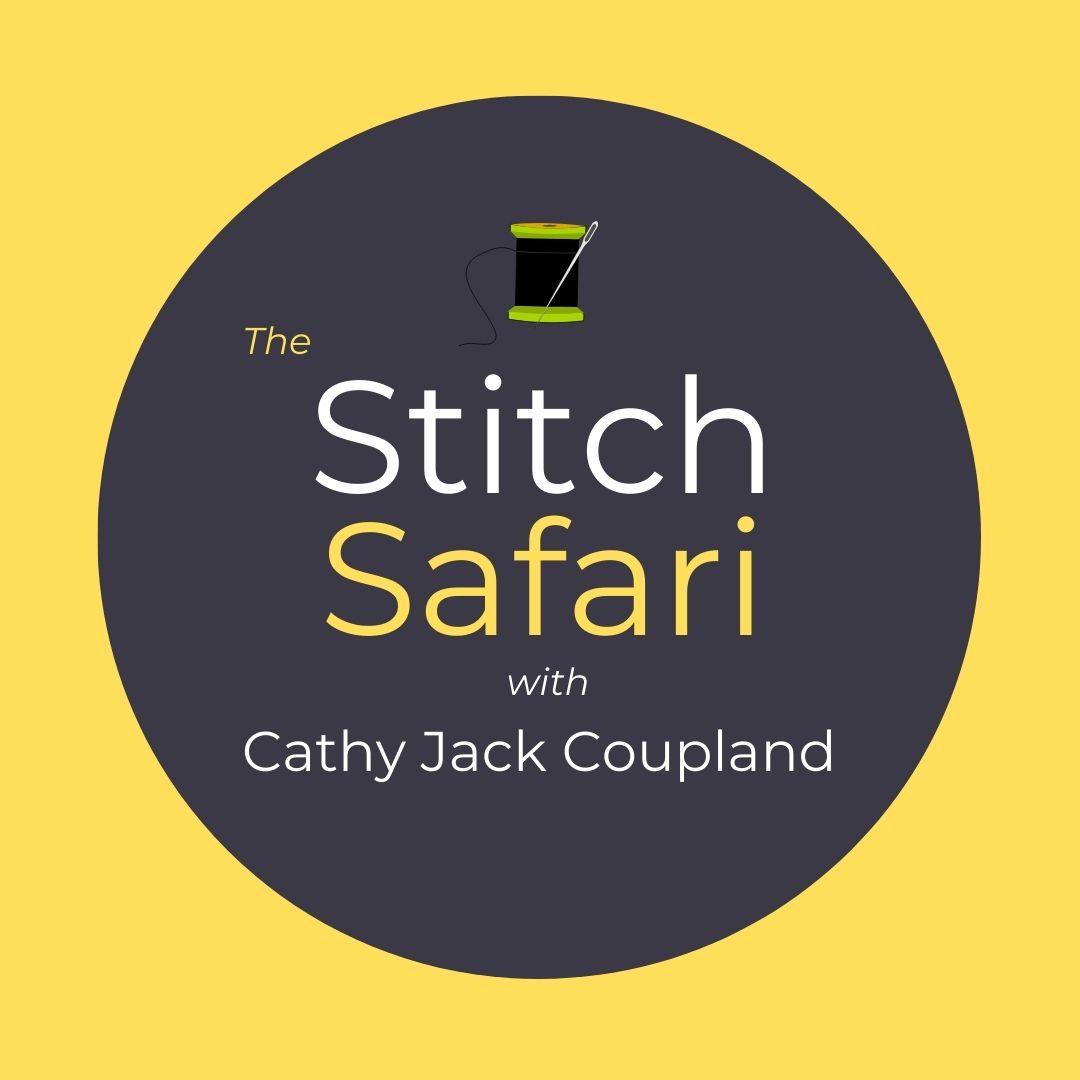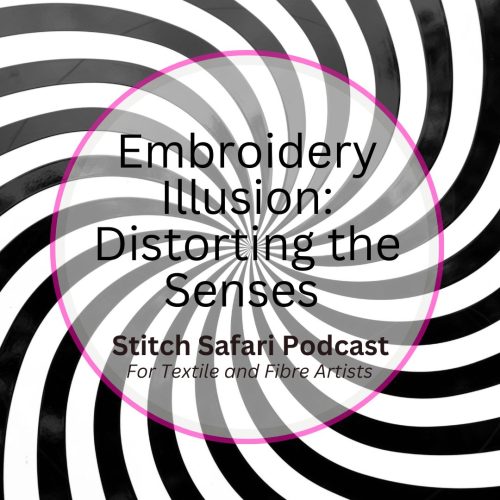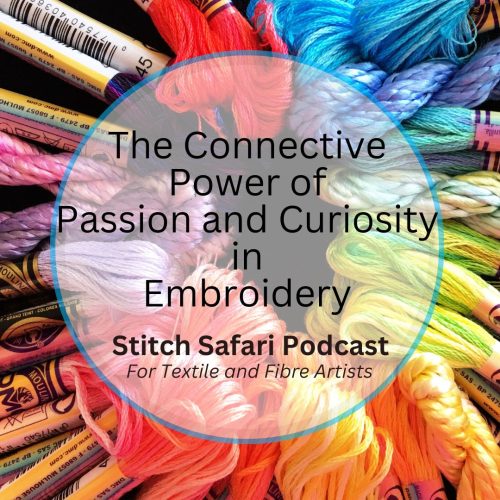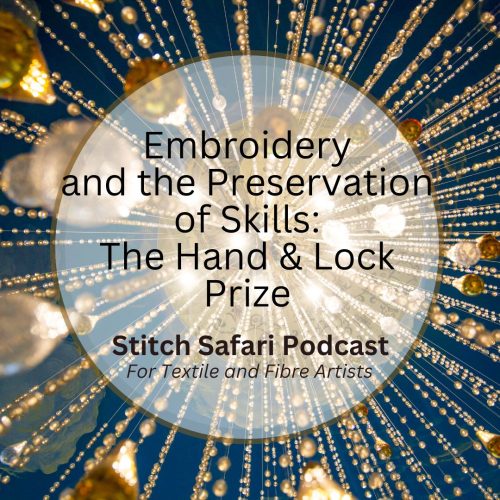What on earth drove me to create this podcast?
Passion, pure and simple. I’ve always enjoyed stitching, and I find history utterly fascinating – I simply married the two together, so the entire ethos for the Stitch Safari podcasts will always revolve around history and stitch somehow, even if that means stitch-related words in common usage, paintings including embroidery and embroidery tools, the women’s movement and the subversive use of stitch, embroidery as art – the list goes on and on. And it always will. Just look around you now at the stitched textiles you’re wearing and probably sitting on. It all started eons ago.
A stitch-related podcast has been at the back of my mind for a couple of years – but it’s tech that’s the stumbling block for me, so having dotjess as tech support has been the driving force behind this podcast actually happening.
I researched podcast presentation and research and write content for each episode – all the while having some sort of cohesive link. That’s meant I’ve had to read – a lot. Previously, I was a book-grazer – you know, the sort of person who bought books and really just looked at all the pretty pictures. Now I went back in and read, and read and read. Wow, what an eye-opener.
The biggest quandary at the outset was ‘where on earth do I start?’ And really, after much thought, the only place that made any sense was at the very beginning with the invention of a needle and some form of thread.
And I think that’s been one of the biggest eye-openers, the innovation of that one simple implement, along with the use of a thread to join skins together or to embellish, was in fact, one of the greatest inventions known to man. But, I couldn’t look at needle and thread in isolation, I also had to research weaving because prehistoric man eventually began to understand the concept of weaving threads together to form a simple fabric. And that coalescence between all three – the needle, thread and a simple fabric is where the true magic of textiles actually begins.
Then we sit back and watch the navigation of these ideas across the peoples of the world, and what a journey that is with each society layering their own identity and meaning into their textiles and embroidery.
I’ve bought and read books I would never normally have looked at – and they’ve been mind-blowing. I can’t get enough – read my book review ‘Womens Work – The First 20,000 Years – Women, Cloth and Society in Early Times,’ by Elizabeth Wayland Barber – a must-read for this early history. Stitch history is addictive and interesting but also time-consuming. It’s all too easy to become so absorbed in a book or internet research, that time just disappears. This is a rabbit-hole I could never come out of if I’m not careful.
So when I received an email recently from my podcast host noting Stitch Safari had reached 2,000 downloads, I was ecstatic. I didn’t know if this would be a success, or if anyone other than me would be interested in the journey I envisioned – I just knew it was something I needed to do.
I’m so pleased people are finding Stitch Safari informative and entertaining. It’s the most fascinating trek I’ve ever undertaken – and one I think I’ll be on for a long time to come. Thank you for your time and for your support.
And if you haven’t listened yet, go to the podcast page on this site, or check out Stitch Safari on FB or IG. Hopefully, you’ll soon become a keen follower.





